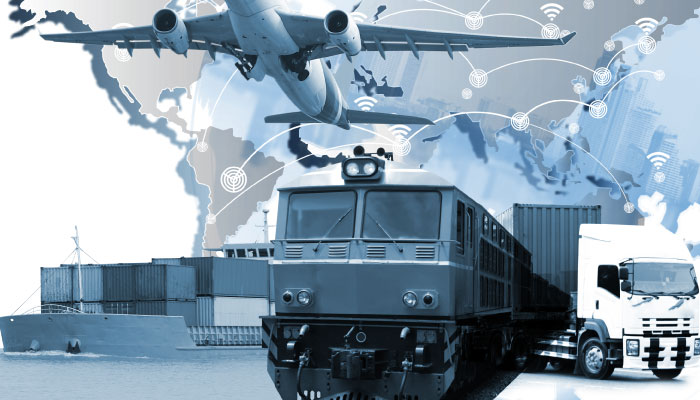If you look up “Amazonized” online, you get a host of definitions, – from the “That sick feeling you get” when you wake up one morning and you find your industry taken over being dominated by a giant Web-based retailer,” to the methodical experimenting required to find just the right the “process of continual improvement whereby incremental website changes are tested to find the combination of aesthetic and technological variables that lead to a high and constantly increasing conversion rate.” Either way, says supply chain and logistics consultant Tom Craig, it’s impossible to overestimate the impact Amazon has had on the economic system— and supply chains had better emulate the giant if they want to remain relevant.
Craig leads a conference for AudioSolutionz, “Supply Chain that Drives and Meets e-Commerce Customer Expectations,” which covers the current state of e-commerce, new selling realities, and supply chain transformation—and offers critical insights . It should be required viewing for manufacturers, retailers, manufacturers and sellers of consumer goods, and anyone involved in B2C and B2B services.
An ‘Intimidating’ Horse of a Different Color
Amazon has “revolutionized the idea of marrying technology with process to greatly enhance the shopping experience of [its] customers, leading to a very high sales conversion rate,” according to the e-commerce solutions provider Global Directive.
That process has created lots of winners—and engendered ongoing criticism of the company. But Amazon gets attention because of its breadth. After all, Amazon is—clearly— not just a bookstore, noted the New Yorker. It’s also a global superstore, hardware manufacturer and a utility, video distributor, book publisher, production studio, literary magazine, grocery deliverer and package service, noted a New Yorker article. “All these streams and tributaries make Amazon something radically new in the history of American business,” the magazine said; but “Amazon’s identity and goals are never clear and always fluid, which makes the company destabilizing and intimidating.”
Although critics also point out that the company is challenged when it comes to turning a profit, its success is undeniable. Prices of a single share of company stock are well above $1,200, and the company is expected to be responsible for nearly half of all e-commerce sales in the United States in 2017.
Lesson 1: ‘Amazonize’ Means ‘Customer-Centric’
The reasons for Amazon’s success are widely studied, and, while theories abound, the conclusions of all are the same: Amazon is to be emulated, not regarded with skepticism.
One clear lesson to be learned has to do with customer focus. Leadership principles at Amazon include “obsess over the customer” and “deliver results,” one former company executive told Forbes.
“The thing I’d say is that these principles are truly used in everyday meetings and everyday situations by everybody in the organization to help make better, faster, more consistent decisions aligned to the strategy and the beliefs of the organization,” said John Rossman. “What I find lacking in so many circumstances is that while people may agree on an element, a strategy, or how we want to work together, they actually don’t have a consistent or shared decision-making framework.”
Digital marketing agency Snap confirms that much of the retailer’s success is tied to customer service.
“Most likely, Amazon’s most critical success factor is the customer service strategy,” the agency wrote in a blog post titled “7 Reasons Why Amazon Is So Successful.” “The company consistently ranks high on all satisfaction lists,” it noted.
Lesson 2: Learn How to Make Good Decisions
Much of Amazon’s success is due to the company’s decision-making matrix—Amazon looks at what it calls Type 1 and Type 2 decisions, described in a 2016 Business Insider article.
“Type 1 decisions are irreversible and should be made with caution,” the magazine explained in a subsequent 2017 article, “Amazon’s success is unparalleled — and ‘Type 2 decisions’ are a major reason why.” On the other hand, “Type 2 decisions are reversible, like ‘two-way doors,’ and should be made quickly. Amazon’s willingness and ability to make Type 2 decisions has been a major factor in its success,” the article noted.
As companies grow, Amazon CEO Jeff Bezos has said, they treat too many decisions as heavy-weight Type 1 decisions—an act that slows the company down and robs it of its nimbleness.
Lesson 3: Evolve & Experiment
Fast Company added that Amazon’s success has also been tied to its commitment to continuous evolution.
“The website that once sold only books now lets anyone set up a storefront and sell just about anything,” noted Fast Company article “Why Amazon Is The World’s Most Innovative Company Of 2017.” “The warehouse and logistics capabilities that Amazon built to sort, pack and ship those books are available, for a price, to any seller.”
That evolution keeps the company light on its feet even as it reaches unimaginable size, the article added.
Amazon has “been quicker in responding to changes that the rest of the work world is now experiencing: data that allows individual performance to be measured continuously, come-and-go relationships between employers and employees, and global competition in which empires rise and fall overnight,” the New York Times reported. “Amazon is in the vanguard of where technology wants to take the modern office: more nimble and more productive, but harsher and less forgiving.”
And the company’s projections for the future: more of the same.
“The current consensus among 48 polled investment analysts is to buy stock in Amazon,” according to CNN. “This rating has held steady since December, when it was unchanged from a buy rating.”




